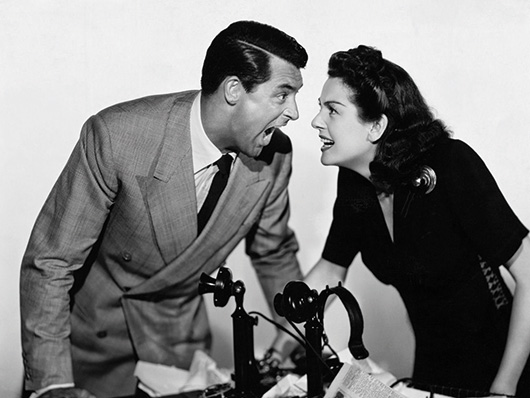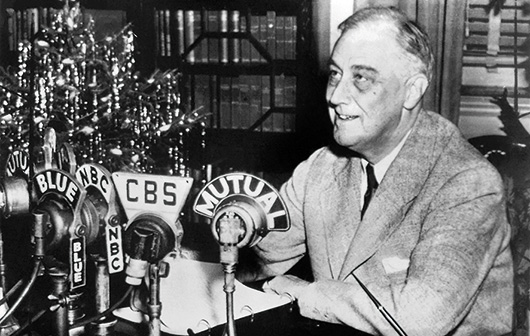 Katharine Hepburn and Cary Grant in Bringing up Baby (1938)
Katharine Hepburn and Cary Grant in Bringing up Baby (1938)Talking Funny
It is a great misfortune that I have not met every single one of you, the brilliant retro enthusiasts that read and write for Mr Keller’s magnificent magazine. If I ever do have the pleasure of making your acquaintance, after about 20 minutes of polite conversation you will have noticed something a bit strange and be forced to ask me,
“So, where are you actually from?”
I currently live in London, but my first decade was spent in Canada and my second in the Middle East at a British international school. My father is Scottish and my mother is Canadian and I have spent more hours than I care to count, flying back and forth over the Atlantic ocean to keep up with both of them. The result of all this is that I have a peculiar sort of mongrel transatlantic accent and it has sparked in me a fondness for the now extinct, faux mid-atlantic accent of the early 20th century that was spoken by so many actors, politicians and newscasters.
The accent was not native to any state or country and had to be adopted by Americans trying to sound distinguished, and Britons attempting to appeal to audiences across the pond. It required soft, elongated vowels in words like ‘grass’ and ‘France’; sharp, clipped pronunciation of ‘t’s in the middle of words such as ‘water’; and a lack of rhoticity so that ‘r’s at the end of words like ‘fear’ are silent. It also altered one’s dialect by avoiding words and phrases that were too British or too American for an international audience to understand.
The actor best known for his mid-atlantic accent was Cary Grant, who was born in Bristol but later became an American citizen.






